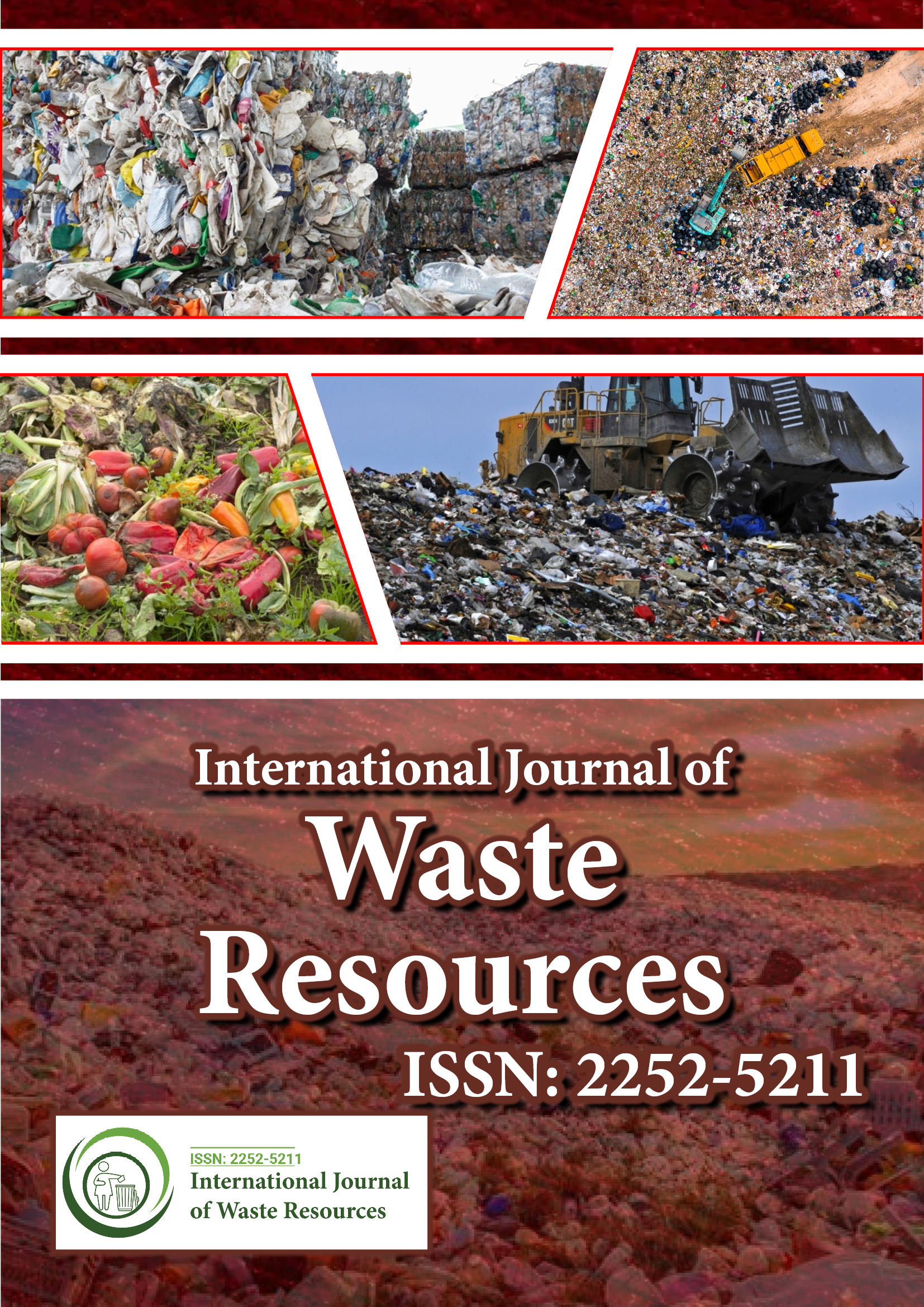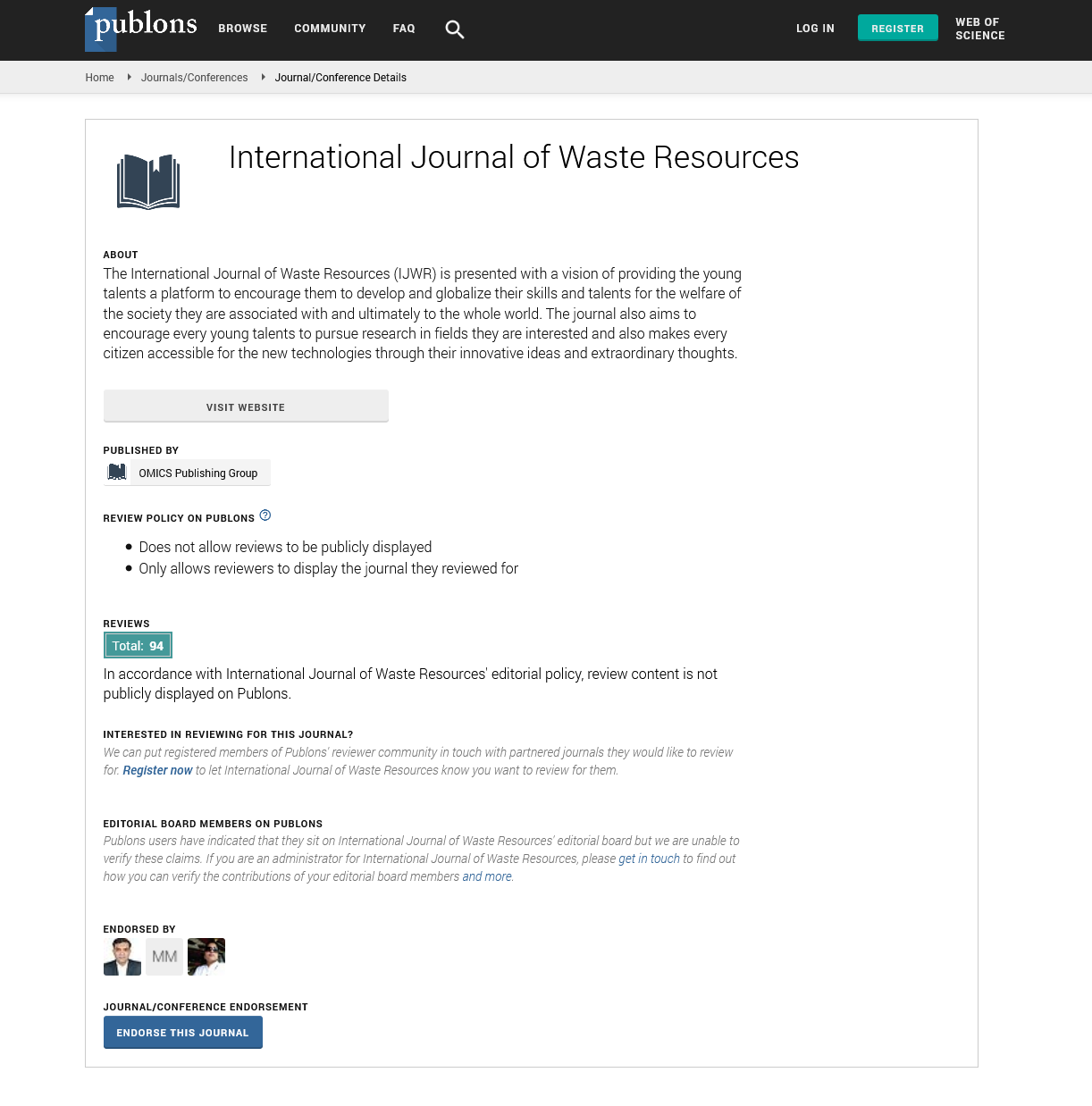Indexed In
- Open J Gate
- The Global Impact Factor (GIF)
- Open Archive Initiative
- VieSearch
- International Society of Universal Research in Sciences
- China National Knowledge Infrastructure (CNKI)
- CiteFactor
- Scimago
- Ulrich's Periodicals Directory
- Electronic Journals Library
- RefSeek
- Directory of Research Journal Indexing (DRJI)
- Hamdard University
- EBSCO A-Z
- Publons
- Google Scholar
Useful Links
Share This Page
Journal Flyer

Open Access Journals
- Agri and Aquaculture
- Biochemistry
- Bioinformatics & Systems Biology
- Business & Management
- Chemistry
- Clinical Sciences
- Engineering
- Food & Nutrition
- General Science
- Genetics & Molecular Biology
- Immunology & Microbiology
- Medical Sciences
- Neuroscience & Psychology
- Nursing & Health Care
- Pharmaceutical Sciences
Commentry - (2025) Volume 15, Issue 2
Pollution Prevention: Strategies to Reduce Contaminants at Their Original Source
Yong Park*Received: 30-Apr-2025, Manuscript No. IJWR-25-29435; Editor assigned: 02-May-2025, Pre QC No. IJWR-25-29435; Reviewed: 16-May-2025, QC No. IJWR-25-29435; Revised: 23-May-2025, Manuscript No. IJWR-25-29435; Published: 30-May-2025, DOI: 10.35248/2252-5211.25.15.618
Description
Pollution prevention is the proactive approach of reducing or eliminating waste and environmental contaminants at their source rather than managing them after they have been created. Unlike traditional pollution control methods that treat or dispose of waste once it is produced, pollution prevention focuses on modifying processes, improving efficiency and changing behaviors to avoid the generation of pollutants in the first place. This strategy is essential for protecting natural ecosystems, conserving resources, safeguarding public health and promoting sustainable economic development.
Pollution can come from various sources including industrial operations, transportation, agriculture and households. It can affect air, water and soil quality, harm biodiversity and contribute to climate change. Common pollutants include greenhouse gases, particulate matter, chemical waste, heavy metals, plastics, fertilizers and pesticides. By targeting the root causes of pollution, prevention efforts aim to reduce these harmful outputs through cleaner production, smarter design and more responsible consumption.
One of the most effective ways to prevent pollution is through source reduction in manufacturing and industrial processes. This can be achieved by redesigning products to use fewer toxic materials, implementing closed-loop systems to reuse materials and upgrading machinery to improve energy and material efficiency. For example, using water-based paints instead of solvent-based alternatives in factories significantly reduces the release of volatile organic compounds into the atmosphere. Similarly, installing sensors and automation technologies can minimize raw material use and reduce waste generation.
Pollution prevention also plays a vital role in agriculture, where runoff of fertilizers, pesticides and animal waste can severely impact water bodies and soil health. Adopting practices such as integrated pest management, precision farming, crop rotation and organic farming reduces the need for chemical inputs and minimizes the environmental footprint of farming activities. Buffer zones, cover crops and no-till farming can further reduce erosion and nutrient runoff, helping maintain healthy ecosystems and water quality.
In the energy sector, pollution prevention involves transitioning from fossil fuels to renewable energy sources such as solar, wind, hydro and geothermal power. These sources produce little or no emissions, reducing air pollution and greenhouse gas concentrations. Improving energy efficiency through better insulation, energy-efficient appliances and smart grids also plays a significant role in reducing the need for electricity generation and the associated environmental impacts. Pollution can be further minimized by encouraging public transportation, promoting electric vehicles and enhancing fuel standards.
Consumer behavior has a significant influence on pollution levels and prevention efforts often include public education and awareness campaigns to promote sustainable choices. Reducing single-use plastics, reusing products, recycling responsibly and choosing environmentally friendly goods all contribute to lowering pollution levels. For instance, using cloth bags instead of plastic, purchasing in bulk to reduce packaging waste and properly disposing of electronic waste can have a meaningful impact. Additionally, conserving water and energy in daily routines reduces strain on municipal systems and lowers emissions from energy production.
Pollution prevention also encompasses waste management strategies that prioritize reduction over disposal. The waste hierarchy reduce, reuse and recycle serves as a guiding principle. Reducing the generation of waste is the most effective step, followed by reusing items to extend their life and recycling materials to keep them out of landfills. Composting organic waste reduces methane emissions from landfills and returns nutrients to the soil. Extended producer responsibility policies, which hold manufacturers accountable for the entire lifecycle of their products, further encourage eco-friendly design and waste minimization.
In healthcare and laboratories, pollution prevention includes substituting hazardous chemicals with safer alternatives, implementing green chemistry practices and improving inventory management to avoid unnecessary stockpiling and waste. Proper disposal of pharmaceuticals and medical waste prevents contamination of water supplies and ecosystems. Institutions can also reduce their environmental impact by adopting energy-efficient equipment, digitizing records and minimizing single-use items where possible.
Governments play a crucial role in promoting pollution prevention through regulations, incentives and support programs. Environmental regulations such as emissions standards, chemical bans and discharge limits help reduce pollution at its source. Economic incentives, including tax breaks, grants and low-interest loans, encourage businesses to invest in cleaner technologies and sustainable practices. Public recognition programs and certifications also motivate industries to improve their environmental performance.
Monitoring and reporting are essential components of effective pollution prevention. By tracking emissions, resource use and waste generation, organizations can identify opportunities for improvement and measure the success of their initiatives. Life Cycle Assessments (LCAs) evaluate the environmental impact of products from raw material extraction to disposal, helping decision-makers choose less polluting alternatives. Environmental management systems such as ISO 14001 provide frameworks for continuous improvement and pollution prevention integration within organizational operations.
Technological innovation continues to advance pollution prevention efforts. Green technologies such as biodegradable materials, waterless cleaning systems and carbon capture and storage are helping to reduce pollution across various sectors. Research into sustainable materials, alternative fuels and ecosystem restoration further enhances society’s ability to prevent environmental contamination. Investment in research and development is critical to expanding the tools available for pollution prevention.
Conclusion
In conclusion, pollution prevention is a forward-thinking, cost- effective and environmentally responsible approach to managing human impact on the planet. By focusing on reducing pollutants before they are created, societies can protect ecosystems, enhance public health and support sustainable development. Whether through industrial innovation, agricultural best practices, energy transitions, or individual actions, pollution prevention represents a shared responsibility that benefits present and future generations. As environmental challenges continue to grow, adopting a prevention-first mindset becomes not just preferable but essential.
Citation: Park Y (2025) Pollution Prevention: Strategies to Reduce Contaminants at Their Original Source. Int J Waste Resour: 15:618.
Copyright: © 2025 Park Y. This is an open-access article distributed under the terms of the Creative Commons Attribution License, which permits unrestricted use, distribution and reproduction in any medium, provided the original author and source are credited.

